How to attract your favourite birds to your garden

This summer, when a rainbow lorikeet or kookaburra comes to visit your home, what will you do? Will you offer them a slice of apple, or simply watch until they take flight?
It brings many people joy to provide food and water for birds, to encourage them to stay a while and be given the chance to observe them more closely. But some people are reluctant to interact with birds in this way because they’re worried it might damage the birds’ health.
In contrast with other countries, little research has been done on the effects of feeding birds in Australia. As a result, there are no established guidelines around how to feed and provide water for local birds.
That’s why we ran the Australian Bird Feeding and Watering Study. We asked nearly 3,000 people to monitor the birds that visited their feeding areas and birdbaths. We wanted to know if there was a difference in the species that visited different types of gardens.
We examined the numbers and types of birds visiting:
- birdbaths where no food was provided
- birdbaths where food was provided
- bird-feeders where birdbaths were provided
- places where only food was provided.
The early results from the winter stage of the Australian Bird Feeding and Watering Study suggest that if you provide food and water, you will get more birds in your garden. But the species you attract will depend on what exactly your garden has to offer.
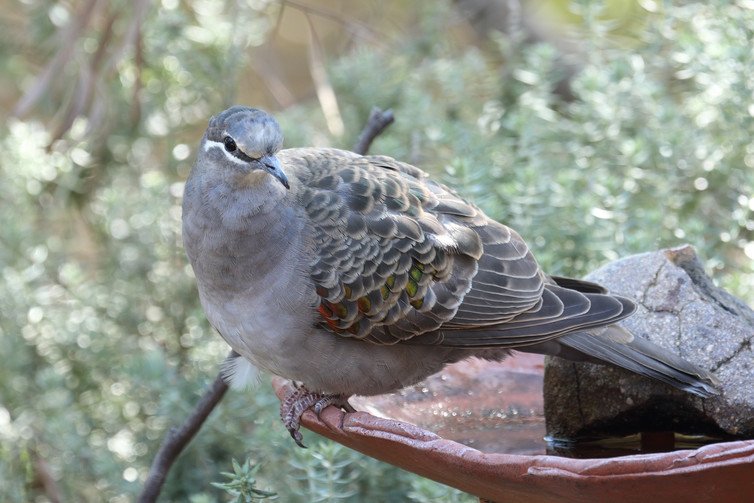
Common bronzewings like to eat seeds. (Source: Glenn Pure, CC BY-NC) Providing different combinations of food and water will attract different species.
Granivores
Granivores are seed-eating birds. They include species such as parrots, crested pigeons, sulphur-crested cockatoos, crimson rosellas and galahs.
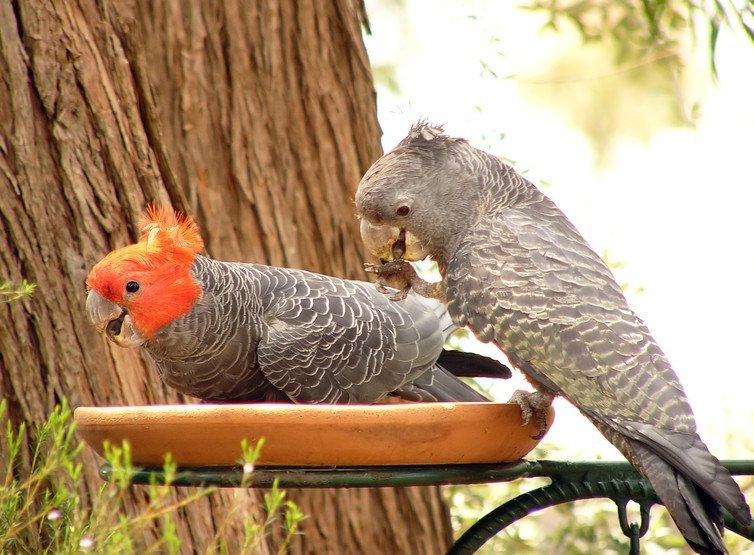
Gang gang cockatoos refresh themselves in a garden. (Source: Glenn Pure)
We noticed a spike in the number of granivores in gardens where both food and birdbaths were provided. But when food was on offer, fewer granivores chose to use the birdbath. We don’t yet know exactly why this is, but it could be because these seed-eaters need less water, or they can get it more easily from other sources than they can food.
Also, most of the bird food sold in shops is seed-based. People who buy these products will naturally attract more seed-eating birds to their garden.
We were, however, surprised to see crested pigeons visiting gardens where food was provided. These birds are only recent urban arrivals, and were previously restricted to semi-arid environments as opposed to the more urban areas where most of our citizen scientists lived. But crested pigeons are very adaptable and now compete fiercely for food and territory with the introduced spotted dove in some Australian gardens.
Nectarivores
“Small” nectarivores are nectar-eating birds that weigh less than 20 grams. The main birds in this group are New Holland honeyeaters, eastern spinebills and Lewin’s honeyeaters.
The early results of our study suggest small nectarivores prefer gardens with birdbaths more than their granivore and insectivore friends. In fact, it seems that these small nectarivores like birdbaths so much, they will choose birdbaths over food when both are provided.
“Large” nectarivores are nectar-eating birds that weigh more than 20 grams. These species including noisy miners, rainbow lorikeets and red wattlebirds – seem to prioritise food over birdbaths. This may be because they’re looking for a source of protein that they can’t easily find in their natural environment.
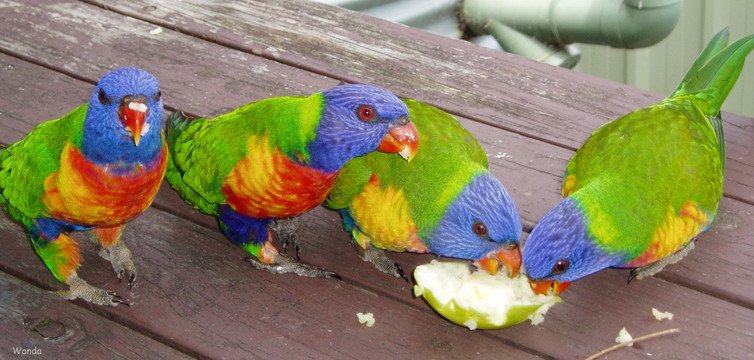
Rainbow lorikeets seem to prioritise food over birdbaths. (Photo supplied by Wanda Optland, provided by author.)
Honeyeaters – such as Lewin’s honeyeaters, blue-faced honeyeaters and noisy miners – will forage on nectar but will eat insects as well. They switch from one to the other, but once they have found their meal they will defend it vigorously from other birds.

Honeyeaters will forage on nectar but will consume invertebrates as well. (Photo by Wanda Optland, supplied by author.)
Insectivores
Insectivores feed on insects, worms, and other invertebrates. Some insectivore species include superb fairy-wrens, willie wagtails and grey fantails.
Insectivores are most attracted to gardens where both food and water are provided. While superb fairy-wrens were frequently found in gardens where food was provided, willie wagtails and grey fantails preferred to visit gardens where only water is provided.

The striated thornbill feeds mainly on insects. (Source: Glenn Pure, CC BY-NC)
Many people have told me how confident fairy-wrens and willie wagtails can become around houses and gardens. These tiny birds can be bold and aggressive, and can work together to get what they want. A mum and dad fairy-wrens will conscript their older children into looking after younger ones – and siblings who refuse to help find food and defend territory may even be kicked out of the family. So these tough breeds have a competitive advantage in their new urban environments, and aren’t afraid to mix with or even chase off bigger birds.
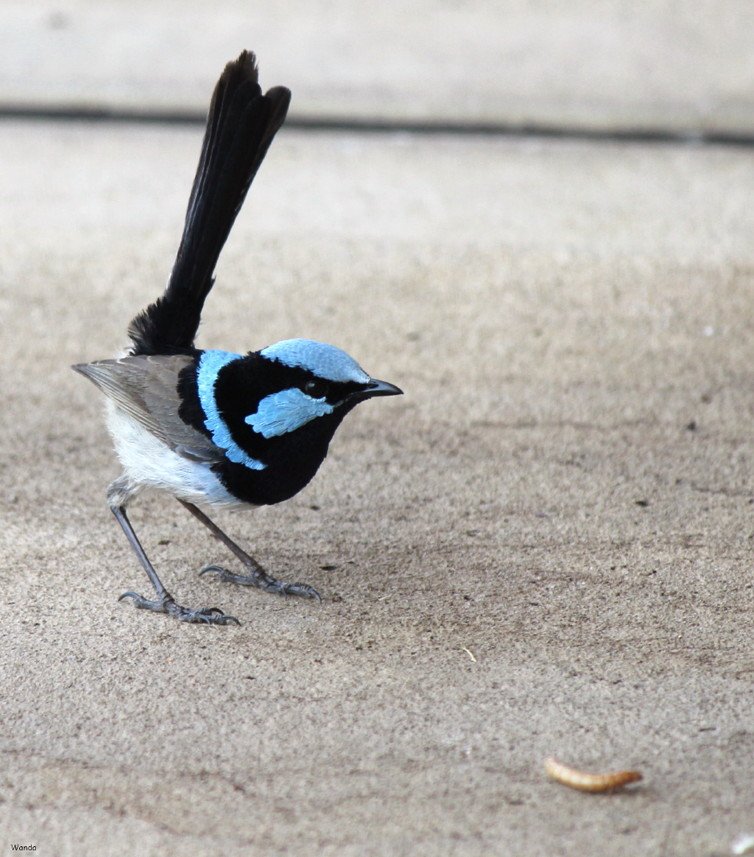
Fairy wrens can become surprisingly bold around gardens and houses. (Photo by Wanda Optland, supplied by author)

Bolder than they look – a fairy wren eats from a citizen scientist’s hand. (Source: Peter Brazier)
You may be wondering exactly what type of seed to put out to attract which granivore, or which meat attracts a carnivore like a Kookaburra. I’m afraid we can’t yet say for sure, as we are yet to analyse the data on this question. Watch this space.
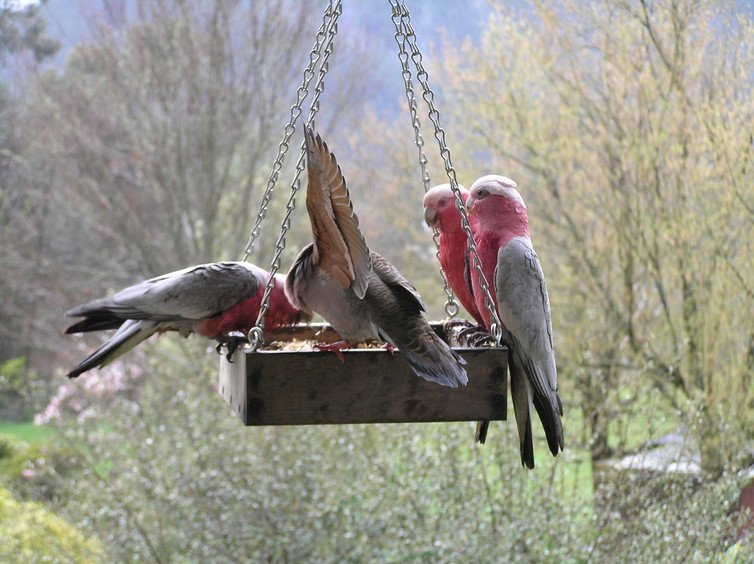
We don’t yet know exactly what offering will attract which bird. (Source: Janette and Ron Ford)
Could birds become reliant on humans for food?
Many people worry that birds will become reliant on humans to provide food for them. But this mightn’t be as big a concern as we once though.
The birds turning up at feeding areas and birdbaths are species that are highly adaptable. Many Australian birds live long lives, and relatively large brains when compared to their European counterparts. Some experts have argued that some Australian birds have evolved a larger brain to cope with feast and famine conditions in the Australian environment.
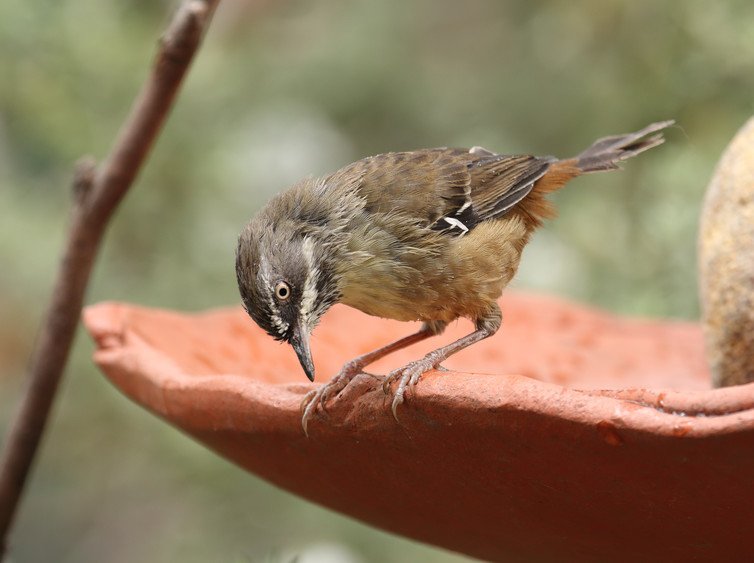
White browed scrubwrens feed mostly on insects. (Source: Glenn Pure, CC BY-NC)
Many Australian bird species can switch easily between estates and gardens in one area, be semi-nomadic, fully nomadic or seasonally migratory. This ability to adapt and switch between diets makes Australian bird species very resourceful, innovative and adaptable.
Of course, Australia also has birds that have highly specialised diets or habitats, and they’re the ones usually most threatened or limited to one territory – birds like the regent honeyeater or ground parrot. In this study, we’re concentrating on birds that are adapting to urban areas and turning up at birdbaths and feeding areas in gardens.
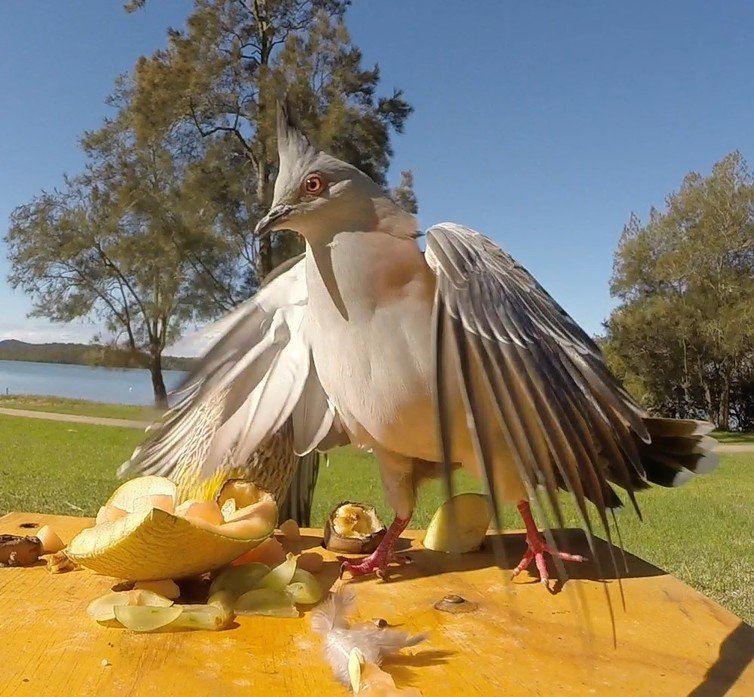
A crested pigeon tucks in. (Source: Brad Walker)
Building our knowledge of bird feeding behaviour
We plan to develop guidelines around providing food and water for birds in a way that has the highest conservation value for our feathered friends. But before we can do that, we need more data from you.
So please take part in the summer stage of the study and pass the word around to others who may wish to be involved.
The summer survey will run for four weeks, beginning on January 30 2017. Visit feedingbirds.org.au to download the complete report on our early findings or to register to take part in our summer study.
Grainne Cleary is a Researcher at the School of Life and Environmental Sciences at Deakin University, Victoria.
This article was originally published on The Conversation. Read the original article.




